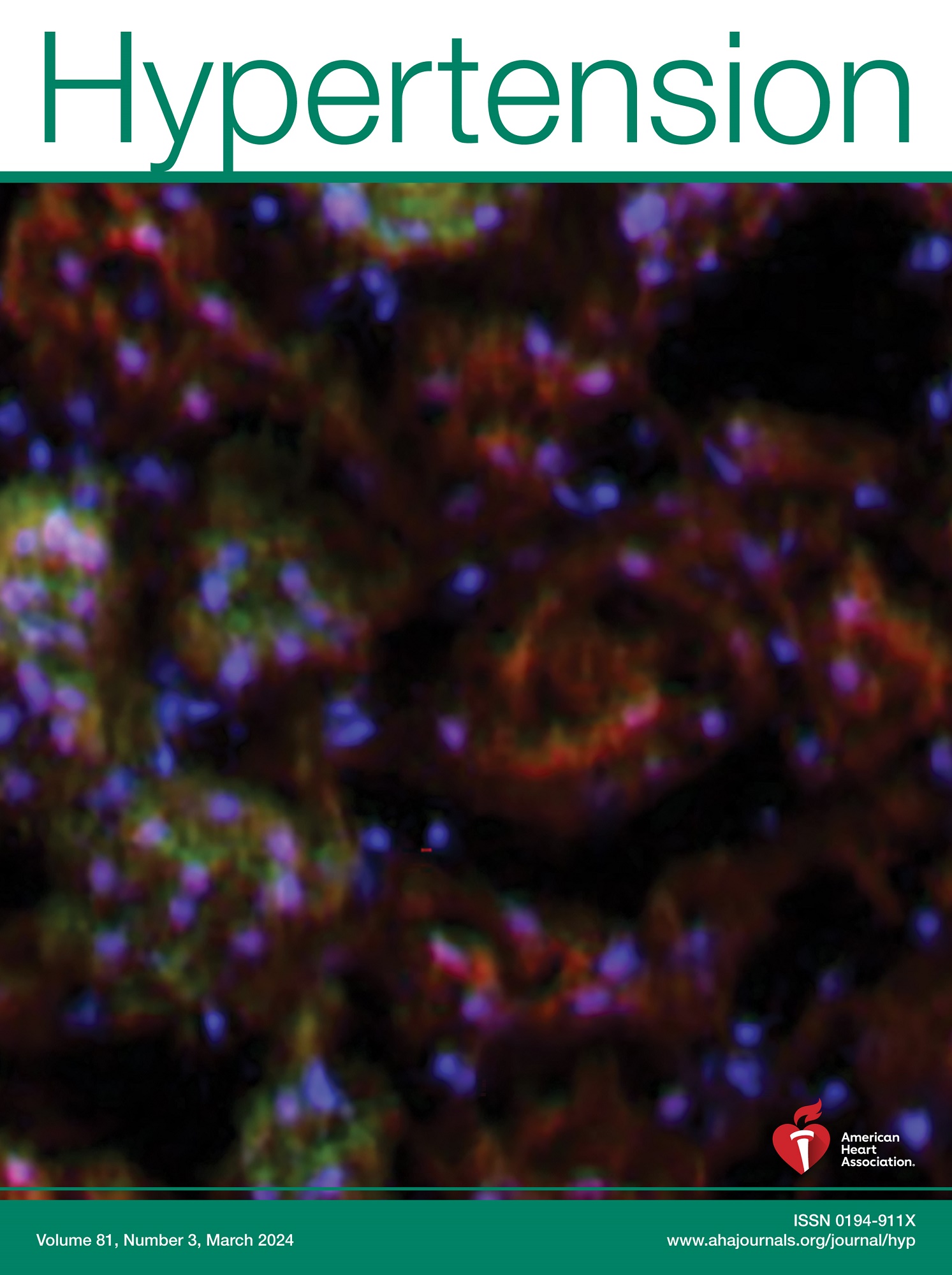Elastin Regulation of Vasoreactivity in Resistance Arteries.
IF 8.2
1区 医学
Q1 PERIPHERAL VASCULAR DISEASE
引用次数: 0
Abstract
BACKGROUND Endothelial cells (ECs) are the primary producers of elastin in the internal elastic lamina (IEL) of resistance arteries. These arteries have distinct gaps in their IEL where ECs facilitate heterocellular communication with smooth muscle in a signaling microdomain termed the myoendothelial junction. However, the contribution of the IEL to vasodilation and blood pressure in resistance arteries is not well understood. METHODS An endothelial-specific elastin knockout mouse (EC-specific Elnfl/fl/Cre+) was used to alter the IEL and myoendothelial junctions. Myoendothelial junction resident proteins were localized by en face, pressure myography assessed the effect of elastin depletion on vessel dilation, and blood pressure was measured using radiotelemetry. RESULTS Using single-cell RNA-sequencing, we found Eln mRNA enriched in arterial endothelium. In EC-specific Elnfl/fl/Cre+ mice, the localization of the myoendothelial junction resident protein Hbα (α hemoglobin) becomes diffuse and disorganized. Normally, Hbα regulates eNOS (endothelial nitric oxide synthase) by sequestering NO, promoting endothelial-derived hyperpolarization as the predominant vasodilation mechanism. However, in EC-specific Elnfl/fl/Cre+ mice, Hbα expression and interaction with eNOS are significantly reduced, corresponding to increased NO signaling via acetylcholine dilation. Intact arteries also exhibit decreased smooth muscle contractility with the diminished IEL. These vascular deficiencies suggested a hypotensive phenotype, but EC-specific Elnfl/fl/Cre+ mice's blood pressure was not different from controls. CONCLUSIONS Our findings suggest that elastin deficiency in resistance arteries alters their vasoreactive properties, resulting in poor contraction and dilation. Furthermore, the absence of the holes in the internal elastic lamina mislocalizes Hbα and eNOS in resistance arteries, switching the vasodilatory mechanism from endothelial-derived hyperpolarization to NO signaling, mimicking larger conduit arteries.弹性蛋白对阻力动脉血管反应性的调节。
背景内皮细胞(ECs)是阻力动脉内弹性层(IEL)中弹性蛋白的主要产生者。这些动脉在其IEL上有明显的间隙,其中内皮细胞在称为肌内皮连接的信号微域中促进异质细胞与平滑肌的通信。然而,IEL对血管舒张和阻力动脉血压的作用尚不清楚。方法采用内皮特异性弹性蛋白敲除小鼠(ec特异性Elnfl/fl/Cre+)改变IEL和肌内皮连接。通过enface定位肌内皮连接蛋白,压力肌图评估弹性蛋白消耗对血管扩张的影响,并使用无线电遥测测量血压。结果通过单细胞rna测序,我们发现Eln mRNA在动脉内皮中富集。在ec特异性Elnfl/fl/Cre+小鼠中,肌内皮连接驻留蛋白Hbα (α血红蛋白)的定位变得弥漫性和紊乱。正常情况下,Hbα通过固载NO调控eNOS(内皮型一氧化氮合酶),促进内皮源性超极化作为主要的血管舒张机制。然而,在ec特异性Elnfl/fl/Cre+小鼠中,Hbα的表达和与eNOS的相互作用显著降低,与乙酰胆碱扩张性NO信号的增加相对应。完整动脉的平滑肌收缩力也随IEL的降低而降低。这些血管缺陷提示低血压表型,但ec特异性Elnfl/fl/Cre+小鼠的血压与对照组没有差异。结论弹性蛋白缺乏改变了阻力动脉的血管反应性,导致其收缩和扩张能力下降。此外,内部弹性板中孔洞的缺失使Hbα和eNOS在阻力动脉中的定位错误,将血管舒张机制从内皮源性超极化转变为NO信号传导,模拟了更大的导管动脉。
本文章由计算机程序翻译,如有差异,请以英文原文为准。
求助全文
约1分钟内获得全文
求助全文
来源期刊

Hypertension
医学-外周血管病
CiteScore
15.90
自引率
4.80%
发文量
1006
审稿时长
1 months
期刊介绍:
Hypertension presents top-tier articles on high blood pressure in each monthly release. These articles delve into basic science, clinical treatment, and prevention of hypertension and associated cardiovascular, metabolic, and renal conditions. Renowned for their lasting significance, these papers contribute to advancing our understanding and management of hypertension-related issues.
 求助内容:
求助内容: 应助结果提醒方式:
应助结果提醒方式:


